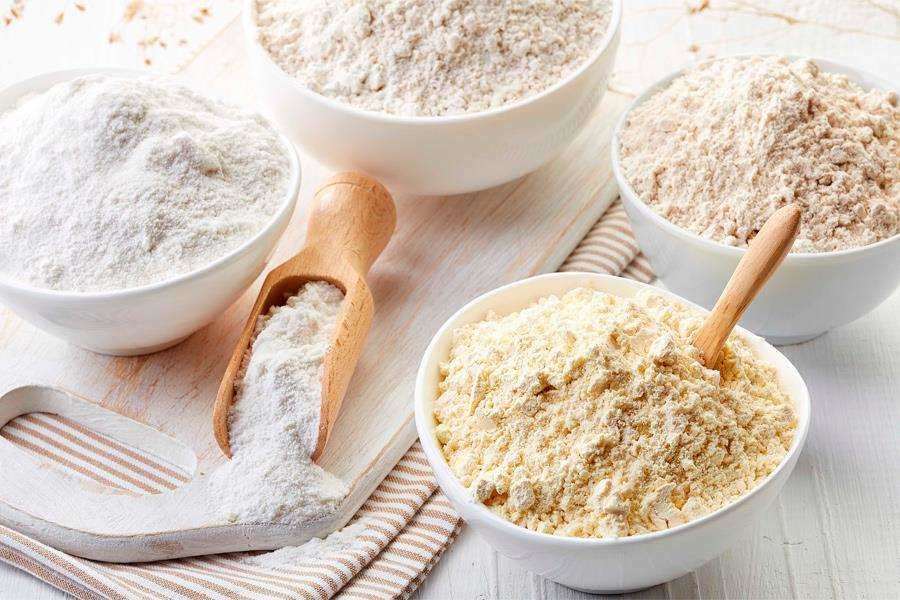You may be interested in: " 5 ways to consume quinoa flour "
Buckwheat flour With buckwheat flour we can make authentic Breton crêpes, as well as pancakes, sponge cakes, pizza bases, cookies and breads with strong, great-tasting crumbs. Buckwheat seed is a food that is little known in the West, however, it is considered a highly energetic and nutritious food. It provides everything necessary for a balanced diet such as : Protein with a high content of biological value, carbohydrates, fiber, and minerals . It is a seed that can be consumed like a cereal. Likewise, its flour provides a series of health benefits: it helps prevent cardiovascular diseases, it has a high iron content which helps combat anemia. Soybean flour Soy flour is obtained from the roasted and then ground beans of this legume. It is a rich source of protein, B complex vitamins and minerals such as iron, calcium and phosphorus . It also has the presence of vitamin K that promotes blood coagulation in the body. Soy flour is highly recommended for people who have cholesterol disorders in the body. The main use of soy flour is in pastries and bakeries . In the case of complete soy flour, it is used at an industrial or semi-artisanal level as a base for cakes, cookies and for bakery products such as breads, pizza dough, buns, yeast is generally added for this purpose. Rice flour It is a flour with a high concentration of starch . It is more used in traditional cuisine, and it may be the case that we have consumed it without realizing it. Its use is not recommended in recipes where the flour needs to rise, however, it is recommended in cases where it is required to give texture to creams or as a thickening agent in sauces, broths and stews. Its nutritional properties make it rich in vitamin A and B complex vitamins. The consumption of this flour is recommended for people who frequently suffer from diseases associated with irritable colon. In children it is recommended in porridge. These are the most common varieties of gluten-free flours. Now let's look for delicious recipes to take advantage of all their nutritional value!
Gluten-free flours The most recommended!
The disease associated with gluten intolerance has seen an astonishing rise in patients of any age in recent years. However, the World Health Association states that it is a relatively new disease, and it is estimated that 75% of cases They are still under study. What is true is that wheat restriction is a determining factor in controlling this disease, which is not so easy, considering that wheat flour, its main cause, is present in almost all foods.
That is why today we have decided to help you with this task, since there is a considerable amount of gluten-free flour on the market with which you can easily replace wheat flour . The gluten-free flours most used as a base or raw material for many recipes are quinoa, buckwheat, soy and rice flour. Let's know its nutritional powers:
quinoa flour
It is a seed with surprising characteristics in terms of its nutritional power. Its calories are provided as complex carbohydrates. It has a significant presence in omega 3 and 6, which makes it superior to any cereal . It has a generous amount of fiber and micronutrients such as potassium, magnesium, calcium and phosphorus. And among the vitamins, all those of the B complex stand out. Their proteins are considered a source of high biological value.
As you can see, it is a very complete flour in terms of the nutritional contribution of the daily diet. Quinoa flour has been quite famous for being the flour chosen as the official food of astronauts. That gives you an idea of its great nutritional value!

